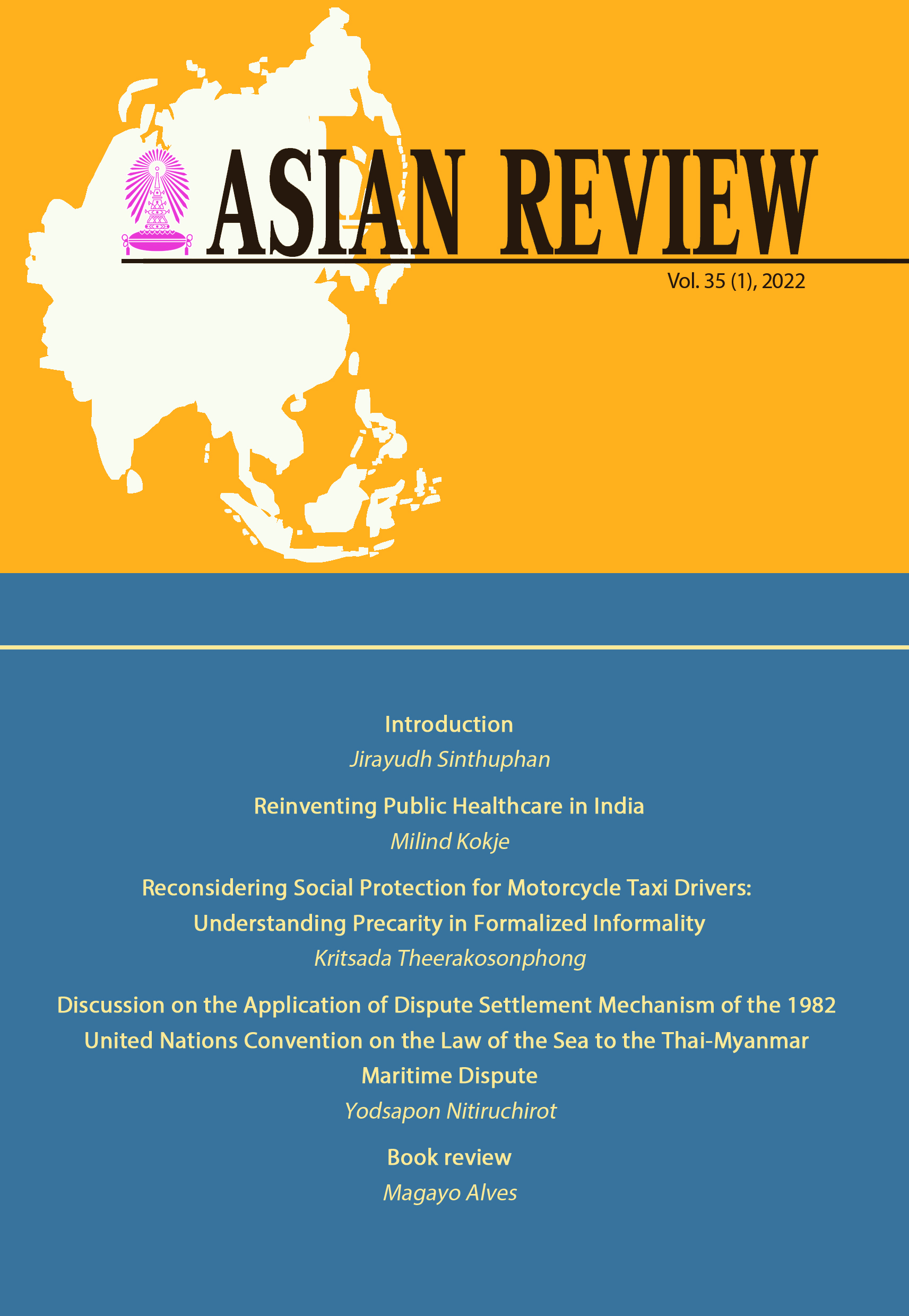Discussion on the Application of Dispute Settlement Mechanism of the 1982 United Nations Convention on the Law of the Sea to the Thai - Myanmar Maritime Dispute
Abstract
This qualitative research study aims to examine theThai-Myanmar maritimedispute,applying the dispute settlement mechanism of the 1982 United Nations Convention on theLaw of the Sea (UNCLOS). The research methodology includes documentary research and in-depth interview. After analyzing data collected,itis found that the dispute settlement mechanismof the UNCLOS comprises voluntary and compulsory procedures. As both Thailand and Myanmarare parties to the UNCLOS and their dispute involves an area in the Andaman Sea, thoseprocedures may be applied. Thecompulsory procedure may be applied with some issues, but notthe territorial dispute and the boundary delimitation dispute. Therefore, there are few benefits togain from the procedure. The voluntary procedure especially negotiation, on the other hand, shouldbe the most appropriate method considering history of both parties
References
ASEAN. 2019. About ASEAN. https://asean.org/asean/about-asean/.
Churchill R. R. and Lowe A. V. 1988. The Law of the Sea, second edition, Manchester: Manchester University Press.
Department of State. 1966. International Boundary Study No. 63.
Jaturon Thirawat. 2003. International Law, 2nd ed. Bangkok:Winyuchon Publishing.
Natalie Klein. 2005. Dispute Settlement in the UN Convention on the Law of the Sea. Cambridge:Cambridge University Press.
Thanom Chareonlab. 2007. Law of the Sea The Maritime Zones of Thailand. Bangkok: Winyuchon Publshing.
Vasin Teeravechayan. 1977. “Delimitation of the Maritime Boundaries between Thailand and Her Neighbouring Countries.” Master’s thesis., Chulalongkorn University.
Yoshifumi Tanaka.2019.The International Law of the Sea, third edition. Cambridge:Cambridge University Press.
Downloads
Published
How to Cite
Issue
Section
License
Copyright (c) 2022 Instiute of Asian Studies, Chulalongkorn University

This work is licensed under a Creative Commons Attribution-NonCommercial-NoDerivatives 4.0 International License.
Published articles are under the copyright of the Instiute of Asian Studies, Chulalongkorn University. Partially or totally publication of an article elsewhere is possible only after the consent from the editors.







